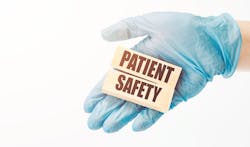The Leapfrog Group, a nonprofit national watchdog organization that assigns a letter grade to U.S. hospitals based on how well they prevent medical errors, accidents, injuries, and infections that kill or harm patients, has added several new measures, including post-operative sepsis.
The fall 2021 Leapfrog Hospital Safety Grade represents the largest set of hospitals ever graded with grades assigned to 2,901 facilities. The Safety Grades reflect performance on more than 30 evidence-based measures of patient safety, including for the first time, post-operative sepsis, blood leakage, and kidney injury.
Some highlights from the report:
- Thirty-two percent of hospitals received an "A," 26 percent received a "B," 35 percent received a "C," 7 percent received a "D," and less than 1 percent received an "F.”
- The five states with the highest percentages of "A" hospitals are Virginia, North Carolina, Idaho, Massachusetts, and Colorado.
- There were no "A" hospitals in Delaware; Washington, D.C.; and North Dakota.
The geographic breakdowns suggest that some areas of the country have significant patient safety issues. For instance, in Brooklyn, N.Y., eight hospitals got D grades and one got an F, and the situation is not much better in Manhattan, where nine hospitals got D grades.
Post-operative sepsis results in suffering, disability, and sometimes death for an estimated 160,000 people a year in the United States. Overall, sepsis in all settings, including post-operative sepsis, kills more than 270,000 people per year and is the costliest condition in U.S. hospitals. The condition does not affect all populations equally; for instance, Black people are twice as likely as white people to be diagnosed with sepsis. In the Leapfrog rating, the number score hospitals receive represents the number of surgical patients that experienced a sepsis infection for every 1,000 people who had surgery. The best hospital score was 2.31 and the worst was 9.73.
The fall grades show significant variation in patient safety performance across U.S. hospitals, which underscores the importance of access to information that allows patients to select the safest hospital available to them.
“As the pandemic continues, we all have heightened awareness of the importance of hospitals in our communities and in our lives,” said Leah Binder, president and CEO of The Leapfrog Group, in a statement. “It is critical that all hospitals put patient safety first. Now we have more information on more hospitals than ever before, so people can protect themselves and their families.”
The Leapfrog Hospital Safety Grade is advised by a panel of patient safety authorities from across the country and receives guidance from the Johns Hopkins Armstrong Institute for Patient Safety and Quality. Grades are updated biannually in the fall and in the spring.


